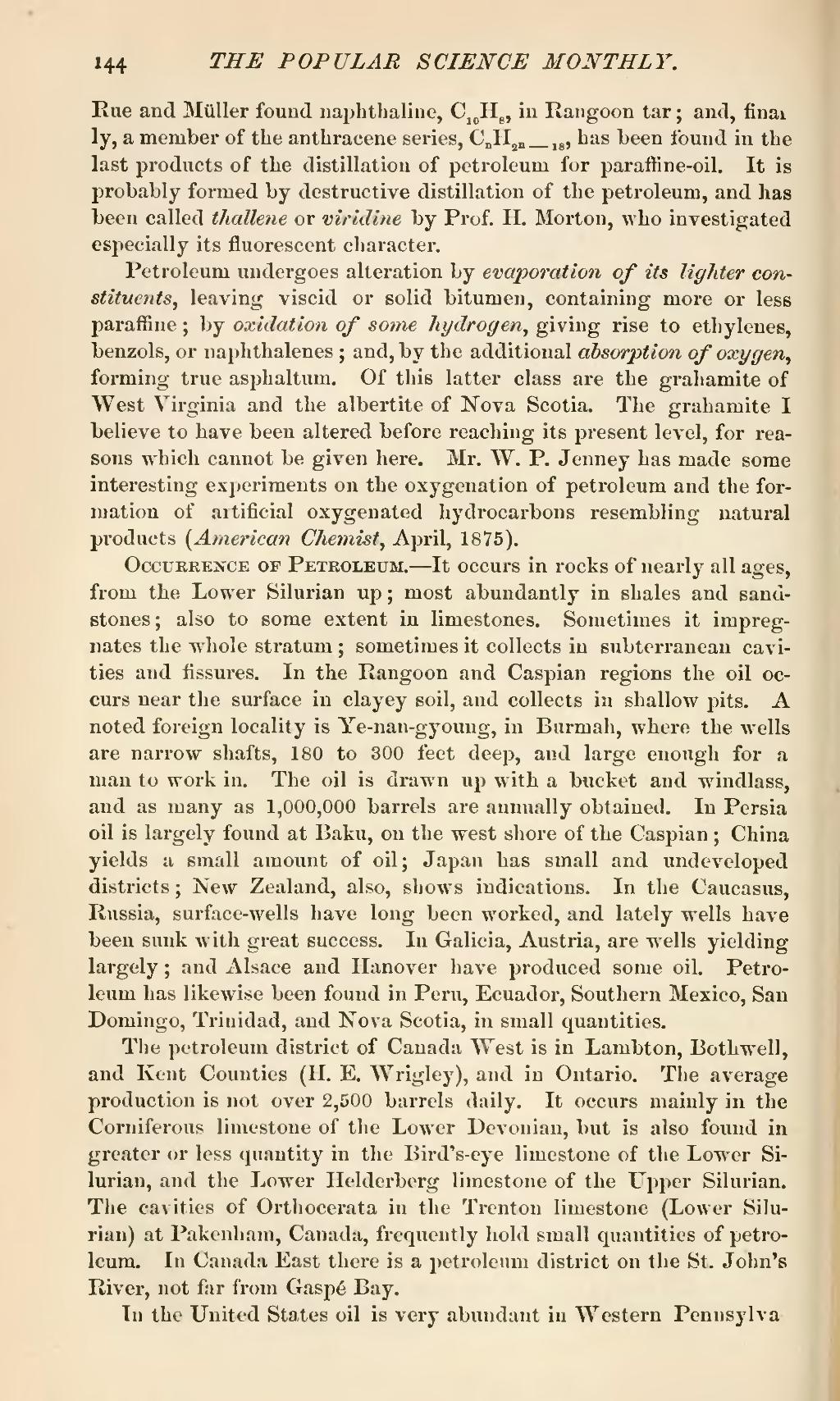Rue and Müller found naphthaline, C10H8, in Rangoon tar; and, finally, a member of the anthracene series, CnH2n—18, has been found in the last products of the distillation of petroleum for paraffine-oil. It is probably formed by destructive distillation of the petroleum, and has been called thallene or viridine by Prof. H. Morton, who investigated especially its fluorescent character.
Petroleum undergoes alteration by evaporation of its lighter constituents, leaving viscid or solid bitumen, containing more or less paraffine; by oxidation of some hydrogen, giving rise to ethylenes, benzols, or naphthalenes; and, by the additional absorption of oxygen, forming true asphaltum. Of this latter class are the grahamite of West Virginia and the albertite of Nova Scotia. The grahamite I believe to have been altered before reaching its present level, for reasons which cannot be given here. Mr. W. P. Jenney has made some interesting experiments on the oxygenation of petroleum and the formation of artificial oxygenated hydrocarbons resembling natural products (American Chemist, April, 1875).
Occurrence of Petroleum.—It occurs in rocks of nearly all ages, from the Lower Silurian up; most abundantly in shales and sandstones; also to some extent in limestones. Sometimes it impregnates the whole stratum; sometimes it collects in subterranean cavities and fissures. In the Rangoon and Caspian regions the oil occurs near the surface in clayey soil, and collects in shallow pits. A noted foreign locality is Ye-nan-gyoung, in Burmah, where the wells are narrow shafts, 180 to 300 feet deep, and large enough for a man to work in. The oil is drawn up with a bucket and windlass, and as many as 1,000,000 barrels are annually obtained. In Persia oil is largely found at Baku, on the west shore of the Caspian; China yields a small amount of oil; Japan has small and undeveloped districts; New Zealand, also, shows indications. In the Caucasus, Russia, surface-wells have long been worked, and lately wells have been sunk with great success. In Galicia, Austria, are wells yielding largely; and Alsace and Hanover have produced some oil. Petroleum has likewise been found in Peru, Ecuador, Southern Mexico, San Domingo, Trinidad, and Nova Scotia, in small quantities.
The petroleum district of Canada West is in Lambton, Bothwell, and Kent Counties (H. E. Wrigley), and in Ontario. The average production is not over 2,500 barrels daily. It occurs mainly in the Corniferous limestone of the Lower Devonian, but is also found in greater or less quantity in the Bird's-eye limestone of the Lower Silurian, and the Lower Helderberg limestone of the Upper Silurian. The cavities of Orthocerata in the Trenton limestone (Lower Silurian) at Pakenham, Canada, frequently hold small quantities of petroleum. In Canada East there is a petroleum district on the St. John's River, not far from Gaspé Bay.
In the United States oil is very abundant in Western Pennsylva-
